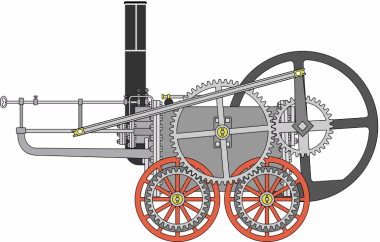Travel
The Evolution of Travel
Steam Trains

Dangerous Trains
The Future Of Travel
Steam Trains
The History of Steam Trains and Railways
by Bob Barton
An invention that changed the world was 200 years old in 2004. Britain celebrated the bicentenary of the steam railway locomotive with a year-long events programme, but it was not an engineering giant such as James Watt or George Stephenson that was fêted.
The man who first put steam engines on rails was a tall, strong Cornishman described by his schoolmaster as “obstinate and inattentive”. Richard Trevithick (1771-1833), who learnt his craft in Cornish tin mines, built his “Penydarren tram road engine” for a line in South Wales whose primitive wagons were pulled, slowly and laboriously, by horses.
On February 21, 1804, Trevithick’s pioneering engine hauled 10 tons of iron and 70 men nearly ten miles from Penydarren, at a speed of five miles-per-hour, winning the railway’s owner a 500 guinea bet into the bargain.

He was 20 years ahead of his time – Stephenson’s “Rocket” was not even on the drawing board but Trevithick’s engines were seen as little more than a novelty. He went on to engineer at mines in South America before dying penniless aged 62. But his idea was developed by others and, by 1845, a spider’s web of 2,440 miles of railway were open and 30 million passengers were being carried in Britain alone.
With the launch in January 2004 of a new £2 coin by the Royal Mint – bearing both his name and his ingenious invention, a coin approved by Queen Elizabeth II – Trevithick at last received the public recognition he deserved.
Steam Cars
Dangerous Trains
The Future Of Travel

Comments
Post a Comment